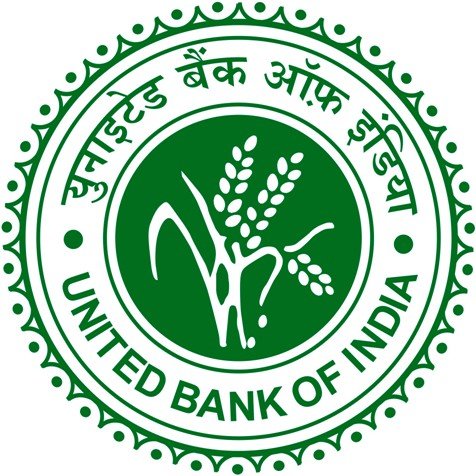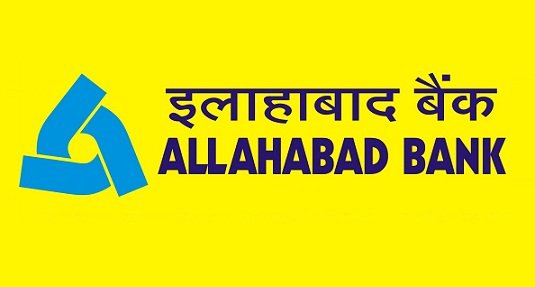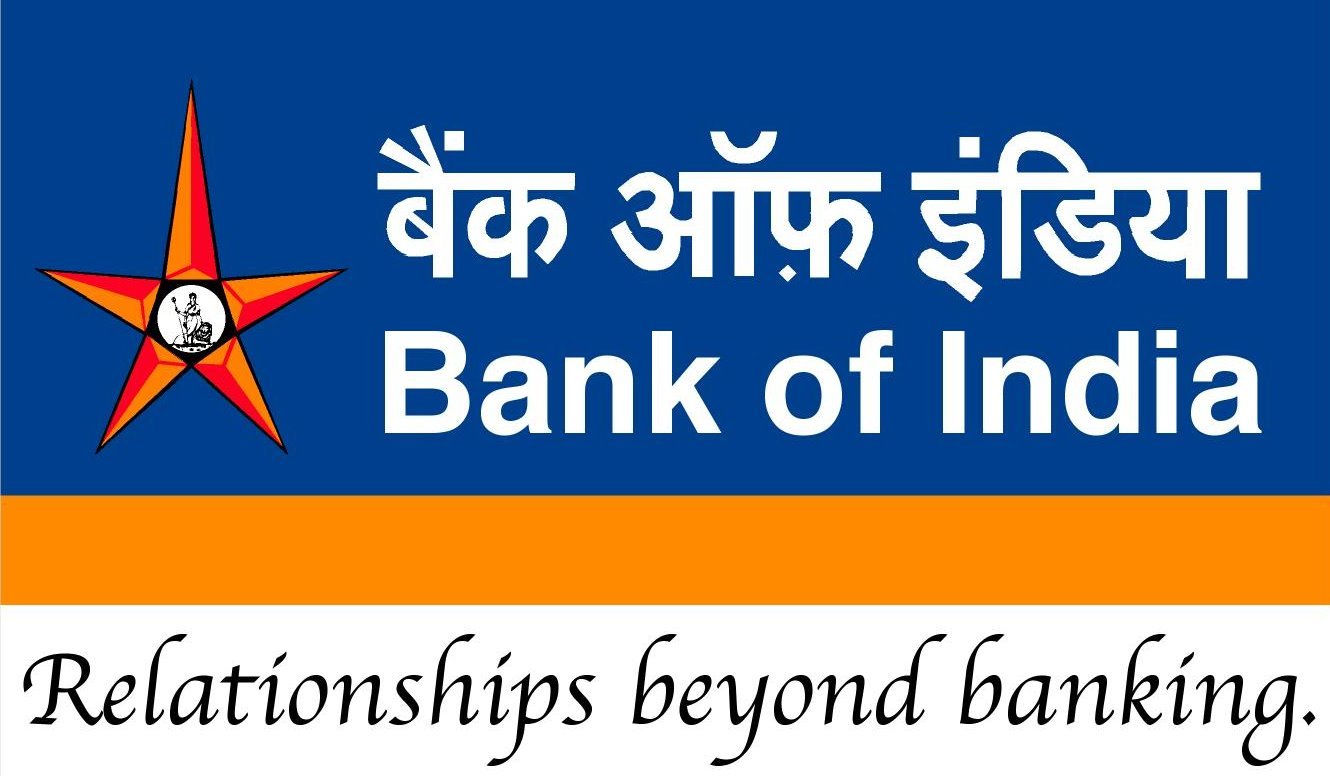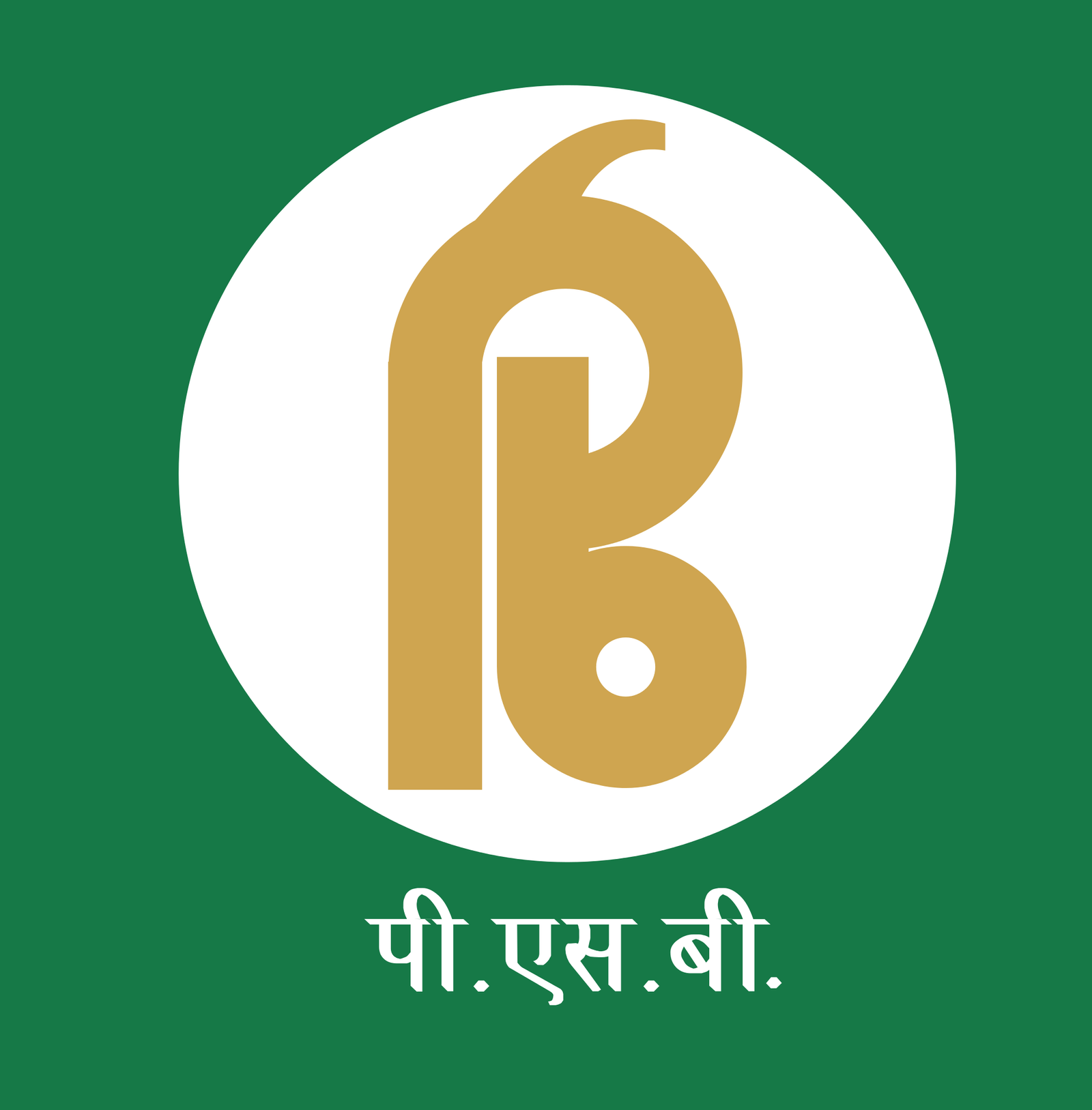History of banking in India Origin and Development of Banking in India
Globally,the story of banking has much in common, as it evolved with the moneylenders accepting deposits and issuing receipts in there place. Banking was fairly varied and catered to the credit needs of the trade, commerce, agriculture as well as individuals in the economy.
The pre- independence period was largely characterised by the existence of private bank organised as joint stock companies. Most banks were small and had private shareholding of the closely held variety. They were largely localised and many of them failed.
The period beginning from 1967 to 1991 was characterised major development, viz.., social control on banks in 1967 and nationalisation of 14 banks in 1969 and 6 more in 1980.
The period beginning from the early 1990s witnessed the transformation of the banking sector as a result of financial sector reforms that were introduced as a part of structural reforms initiated in 1991.
we can summaries the origin of banking in india in the following ways
Early phase of Indian Banks, from 1786 to 1969
- The first bank in India, the General Bank of India, was set-up in 1786. Bank of Hindustan and Bengal Bank followed.
- The East India Company established Bank of Bengal (1809),Bank of Bombay (1840) and Bank of Madras (1843) as independent units and called them Presidency banks. These three banks were amalgamated in 1920 and the Imperial Bank of India, a bank of private shareholders, mostly Europeans, was established.
- Allahabad Banks was established, exclusively by Indians, in 1865.
- Punjab National Bank was set-up in 1894 with headquarters in Lahore.
- Between 1906 and 1913, Bank of India, Central Bank of India, Bank of Baroda, Canara Bank, Indian Bank and Bank of Mysore were set-up.
- The Reserve Bank of India came in 1935.
- To streamline the functioning and activities of commercial banks, the Government of india came up with the Banking Companies Act, 1949, which was later changed to the Banking Regulation Act, 1949.
Banking sector Reforms from 1969 to 1991
- In 1955, government nationalised the Imperial Bank of India and started offering extensive banking facilities, especially in rural and semi-urban areas.
- The government constituted the State Bank of India to act the principal agent of the RBI and to handle banking transaction of the Union Government and State Government all over the country.
- 7 banks owned by the Princely state were nationalised in 1959 and they become subsidiaries of the 1959 and they became subsidiaries of the State Bank of India. In 1969, 14 commercial bank in the country were nationalised.
- In the phase of banking sector reforms, 7 more banks were nationalised in 1980. With this, 80% of the banking sector in India came under the government ownership.
New phase of indian Banking System, Reforms after 1991
- This phase has introduced many more products and facilities in the banking sector as part of the reforms process.
In 1991, under the chairmanship of M Narasimham, a committee was set-up, which worked for the liberalisation of banking practices. - In the phas, the country is flood with foreign bank and their ATM stations. Efforts are being put to give a satisfactory service to customers.
- Phone banking and net banking are introduced.The entire system became more convenience and swift. Time is given importance in all money transactions.
Nationalisation of Banks
The nationalisation of commercial banks took place with an aim to achieve Social Welfare, Controlling Private Monopolies, Expansion of Banking, Reducing Regional Imbalance, Priority Sector Lending and Developing Banking Habits.
In order to have more control over banks, in 19th July, 1969 Mrs Indira Gandhi the then Prime Minister nationalised 14 large commercial banks whose reserves were more than Rs 50 crore. The main aim of nationalising was to reach client in rural area and provide them which more quality services.
Following is the list of bank, which got nationalised at this time
- Allahabad Bank
- Bank of Baroda
- Bank of India
- Bank of maharashtra
- Central Bank of India
- Canara Bank
- Dena Bank
- Indian Bank
- Indian Overseas Bank
- Punjab National Bank
- Syndicate Bank
- UCO Bank
- Union Bank
- United Bank of India
In 15 April, 1980 the banks with more than Rs 200 crore of reserves got nationalised.
Those six banks, which got nationalised are the following
- Andhra Bank
- Corporation Bank
- New Bank of India
- Oriental Bank of Commerce
- Punjab and Sindh Bank
- Vijaya Bank
Later on, in year 1993, the government merged New Bank of India which Punjab National Banks. It was the only merge between nationalised banks.
Banking Structure in India
Indian banking industry has been divided into parts, organised and unorganised sectors. The organised sector consists of Reserve Bank of India, Commercial Banks and Co-operative Banks and Specialised Financial Institutions (ICICI, IFC etc).
Commercial Banks
This is a financial institution providing services for businesses, organisations and individuals. Services include offering current, deposit and saving accounts as well as giving out loans to businesses. A commercial banks is defined as bank whose main business is deposit – taking and making loans. This contrasts with an investment bank whose main business is securities underwriting, mergers and acquisitions advisory, asset management and securities trading. Commercial bank may be Scheduled Commercial Bank and Non-Scheduled Commercial Banks.
Scheduled Commercial Banks
“Scheduled Bank” is defined by section 5 (1) (m) of the Banking Companies Act, 1949 as “a bank for the time being included in included in the Second Schedule of the Reserve Bank of India Act, 1934” . Scheduled banks are those banks whose minimum paid up capital and reserve and amount to Rs 25 lakh. These bank have to submit details of their activities to the Reserve Bank of India every week.
Non-Scheduled Commercial Bank
Non scheduled banks are depository or lending institutions that do not meet the Second Scheduled of Reserve Bank of India Act. These banks may be legal endorsement of the government. Non -Scheduled banks are not just identified as bank that do not meet the criteria in the Second Schedule of the 1934 Act; they are defined in Section 5, Clause C of the Banking Regulation Act of 1949.
Functions of Commercial Banks
The main function of commercial banks are as follows
Received Deposits
The most important activity of a Commercial Banks is to mobilise deposits from the public. People who have surplus income and savings find it convenient to deposit the amounts which banks. Depending upon the nature of deposits, funds deposited with bank also earn interest. Thus, deposits with the bank grow along with the interest earned. If the rate of interest is higher, public are motivated to deposit more funds with the bank. There is also safety of funds deposited with the banks. some important account under received deposits.
Current Account
It is a calculation of a Country’s foreign transactions and alogwith the capital account is a component of a Country’s balance of payment. The current account also includes net income, such as interest and dividends, as well as transfers, such as foreign aid, though these components tend to make up a smaller percentage of the current account than exports and imports.
Saving Account
It is generally opened in bank by salaried persons or by the person who have a fixed regular income. This facility is also given to student, senior citizens, pensioners and so on.
Saving account are opened to encourage the people to save money and collect their savings. The saving account holder is allowed to withdraw money from the account as and when required. The interest which is given on saving account is sometime attractive, but often nominal.
Fix Account
A deposit of money that pays higher interest than a savings account, but impose condition on the amount, frequency, and / or period of withdrawals. Also called time deposit. All these accounts are secure and carry a government guarantee.
Cash Credit Account
It will be opened as per term and conditions of sanction of such credit limits. The rules prescribe for the current accounts, will also apply to Cash Credit account in addition to the sanctioned terms and conditions.
Recurring Deposit Account
In banking terminology, the term recurring deposit refers to the periodic placement of a fixed sum of funds with a bank or financial institution into a special term account, with a specified tenure, generally between 1 and 5 years. At the end of the tenure, the funds are typically withdrawn by the depositor with accrued interest.
To Lend Money
The second important function of a Commercial Bank is to grant loans and advances. Such loans and advances are given to members of the public and to the business community at a higher rate of interest than allowed by banks on various deposit accounts.
The rate of Interest changed on loans and advances varies depending upon the purpose, period and the mode of repayment. The difference between the rate of interest allowed on deposits and the rate changed on the loans is the main source of a bank’s income.
Type of loan of commercial bank are given below
- Overdraft
- Debt and loan
- Retrenchment of exchange bills
- Cash credit
- Investment in public securities
Agency Functions
Agency function include the following
- Collection of cheques, dividends and interests
- Payment of rent, insurance premiums
- Dealing in foreign exchange
- Purchase and sale of securities
- Act as trustee, executor, attorney etc
- Act as correspondent
- Preparation of Income-Tax returns
Miscellaneous Functions
These are as follows
- Issuing letter of credit, travellers cheques circular note etc.
- Undertaking safe Custody of valuables, important documents and securities by providing safe deposit vaults or lockers.
- Providing Customers with facilities of foreign exchange.
- Transferring money from one place to another; and from one branch to another branch of the bank.
- Standing guarantee on behalf of its Customers, for making payments for purchase of goods, machinery, vehicles etc.
- Collecting and Supplying business information;
- Issuing demand draft and pay orders;
- Providing reports on the Credit worthiness of customers.
Non – Performing Asset ( NPA)
A classification used by financial institution that refers to loans that are in jeopardy of defaults. Once the borrower has failed to make interest or principal payments for 90 days the loan is considered to be a non-performing asset. Also known as ‘non-performing loan’ . Non- performing assets are problematic for financial institutions since they depend on interest payments for incom. Troublesome pressure from the economy can lead to a sharp increase in non-performing loans and often result in massive write-downs.
Value Added Services
Value added services provided by Commercial Bank are as follows
- Safe deposit locker facility
- Traveller cheques
- Premium of insurances
- E-banking facilities
- Anywhere banking
- ATM facilities
- Credit card facilities
- ATM debit card facilities
Tit-Bits
- The average population per branch office has sharply declined from 64000 in 1969 to 13000 today.
- Within the banking system, Public Sector Banks (PSB) continue to dominate with 73% of market share of assets and 83% of branches.
- Base rate (floor rate for lending) introduced (July 2010). Prescription of an interest rate floor on savings deposit rate withdrawn ( October 2011 )
- Strengthening of know Your Customer (KYC) and Anti-Money Laundering (AML) norms; marking banking less prone to financial abuse.
Private Banks
Private Banks are banks owned by either an individual or a general partner with limited partner. But licence provided by Reserve Bank of India.
Some Leading Private Banks
Indusind Bank :
Head office – Pune
Establish Year – 1994
Global Trust Bank
Head office – Sikandrabad
Establish Year – 1994
ICICI Bank
Head office – Vadodara
Establish Year – 1994
Axis Bank Ltd
Head office – Ahmedabad
Establish Year – 1994
Centurion Bank
Head office – Punji
Establish Year – 1995
Bank of Punjab
Head office – Chandigarh
Establish Year – 1995
HDFC Bank
Had office – Mumbai
Establish Year – 1995
Yes Bank
Had office – Mumbai
Establish Year – 2004
Other Type Of Banks
Following are other types of bank
Agricultural Bank
A agricultural Bank may, in particular undertaken the following types of business, undertaken the following types of business, namely (a) the graffing of loans and advances, particularly to small and marginad formers and agricultural labourers, whether individual or in group and to co-operative societies for agricultural purposes or agricultural operations or for other connected purposes and (b) the granting of loans and advances, particularly to artisams, small outrepreneures and purpose of small mean engaged intrade, commerce or industry or other productive activities within the notified area of a agricultural banks.
Post office Saving Banks
It is a bank which accepts deposit of small amount only and provide the withdrawal facilities to their own costumer. ATM facilities also available in this bank.
Foreign Exchange Banks
The foreign Exchange banks worked through financial institutions and it operates on several levels Behind the scenes banks turn to a smaller number of financial firms known as ‘dealers,’ who are actively involved in large quantities of foreign exchange trading.
Indigenous Banks
Indigenous banks mean Local Area Banks (LABs). These are banks with features distinct from public sector, private sector, nationalised bank. These banks basically aims to cater to the need of the local, area specific banking needs.
Bankers
One who conducts the business of banking ; one who, individually or as a member of a company, keeps an establishment for the deposit or loan of money or for traffic in money, bills of exchange etc.
Industrial Bank
A financial institution with limited scope – of services, Industrial banks sell certificates that also accept customer deposits.
They then invest the proceeds in installment loans for consumers and small businesses. These banks are also known as Morris banks or industrial loan companies.
Foreign Banks in India
Bank Internasional Indonesia
Related Country – Indonesia
Abu Dhabi Commercial Bank Ltd
Related Country -UAE
American Express Bank Ltd
Related Country – America
Standard Chartered Bank Ltd
Related Country – Britain
Crang Thai Bank Public Company Ltd
Related Country – Thailand
Mizuho Co-operate Bank Ltd
Related Country – Japan
Bank of Bahrain and Kuwait
Related Country – Bahrin
Bank of Tokiyo – Mitsubishi UFJ Ltd
Related Country – Japan
Bank of Nova Scotia
Related Country – Canada
China trust Commercial Bank
Related Country – Taiwan
JP Morgan Chase Bank
Related Country – America
Bank of America
Related Country – America
Oman International Bank
Related Country – Oman
State Bank of Mauritius
Related Country – Mauritius
Arab Bangladesh Bank Ltd
Related Country – Bangladesh
Sonali Bank Ltd
Related Country – Bangladesh
City Bank
Related Country – America
Berkeley’s Bank PLC
Related Country – Britan
ABN – Aomro Bank
Related Country – Holand (Dutch)
DBS Bank Ltd
Related Country – Singapore
Society Generale Bank
Related Country – France
HSBC
Related Country – Hongkong
Shinhan Bank
Related Country – South korea
Deutsche Bank
Related Country – Germany
Bank of Cilon
Related Country – Sri Lanka
Mashreq Bank Ltd
Related Country – UAE
BNP Paribas
Related Country – France
Antwerp Diamond Bank
Related Country – Belgium
Calyon Bank
Related Country – France
State Bank of India and its Associate Banks.
One the recommendation of All India Rural Credit Survey Committee, Imperial Bank was nationalised to become state Bank of India on 1st July, 1955. Its 92% capital is owned by the Reserve Bank and 8 % by the old shareholder of Imperial Banks and others. This bank is thus, not totally a Government Bank, but it is almost fully under the control of the government. On 1st January, 1997 on the direction of government of India and Reserve Bank.
Kashinath Seth Bank Ltd has been amalgamated with the State Bank in 2008 the government took over the stake held by the Reserve Bank of India. State Bank of India (SBI) was previously called Imperial Bank of India in 1921 which was created by amalgamstion of 3 presidency Banks viz, Bank of Bengal, Bank of Bombay and Bank of Madras. It was nationalised in 1955. SBI is ranked 292 in the fortune 500 companies.
SBI Associate Banks
State Bank of Hyderabad
State Bank of Mysore
State Bank of Patiala
State Bank of Bikaner and Jaipur
State Bank of Travacore
SBI
Industry : Banking finanical services
Founded 1st July, 1955
Headquters : Mumbai, Maharashtra, India
Area served : Worldwide
Key people Arundhati Bahattacharya ( Chairman )
Products : Credit card, consumer banking Corporation banking, finance and insurance, investment banking, mortgage loans, private banking, wealth management.
Shareholding
Government of India held around 62% equity shares in SBI. Over 800000 individual shareholders hold approx. 5.7% of its shares. Life Insurance Corporation of India is the largest non-promoter shareholder in the company with 10.9% shareholding.
Shareholder & shareholding
Promoters Government of India 62.31% shareholding
Insurance Companies 11,90% shareholding
Foreign Institutional Investors 09.79 % shareholding
Functioning of State Bank of India
The function of SBI can be grouped under two categories, viz, the Central Banking functions The SBI acts as agent of the RBI at the places where the RBI has no branch.
Accordingly, it renders the following functions
- Bankers to the government
- Banker to banks in limited way
- Maintenance of currency chest
- Acts as clearing house
- Renders promotional functions
General Banking Functions
Besides the above specialised functions, the SBI renders the following functions under Section 33 of the Act
- Accepting deposits from the public under current, savings, fixed and recurring deposit accounts.
- Advancing and lending money and opening cash credits upon the security of stocks, securities etc.
- Drawing, accepting, discounting, buying and selling of bills of exchange and other negotiable instruments.
- Investing funds, in specified kinds of securities.
- Advancing and leading money to court of wards with the previous approval of State Government.
- Issuing and circulating letters of credit etc.
- The State Banks may with the sanction of the Central Government, enter into negotiations for acquiring the business of any other Banking Institutions.
SBI Agriculture Loan
SBI provides SBI Agriculture loan ( term loan ) for asset (bullocks, farm machinery, sheep etc.) Purchase as well as asset creation ( poultry, orchard development, dairy development etc.) which are connected with activities in rural areas and fall under horticulture, agriculture, sericulture, plantation, animal husbandry etc and the loan is to be repaid over a time span of 3 years.
Interest Rate for SBI Agriculture Loan
The rate of interest varies from 8.5% to 12.75% depending on the loan amount and in the extreme case of very high loan amounts, credit risk assessment is required.
Repayment Period
Repayment period varies from 5-15 years and is based on the income generation of the activity for which the loan was taken.
The Guidelines for New Private Banks
- The Bank will open at least 25% of its branch in unbanked rural centres (population up to 9999 as per latest census ).
- The bank shall be required to maintain a minimum capital adequacy ratio of 13 % for a minimum period of three years after commencement of its operations subject to such higher percentage, as may be prescribed by the RBI from time to time.
- Convert the NBFC into bank, if all the activities undertaken by it are allowed to be undertaken by a bank departmentally. In the case NBFC shall have minimum network of Rs 500 crores.
- The bank should operates on Core Banking Solution (CBS) from the beginning.
Other Important Banks in India
United Bank of India
 Headquarters : Kolkata, west Bengle, India
Headquarters : Kolkata, west Bengle, India
Founded : 1950, IndiaNationalisation : 1969Punch Line : The Bank the begins with ‘U’Regional Rural Bank sponsored by UBI areTripura Gramin BankAssam Gramin Vikash BankBangiya Gramin Vikash BankManipur Rural Bank
Union Bank of India

Headquarter : Mumbai
Founded : 1919
Nationalisation : 1969
Punch Line : Good People to bank with
Regional Rural Bank sponsored by Union Bank are
Rewa Sidhi Gramin Bank
Kashi Gomti Samyut Gramin Bank
UCO Bank

Headquarter : kolkata
Founded : 1943
Nationalised : 1969
Punch Line : Honour Your Trust
Regional Rural Bank sponsored by UCO Bank are
Bihar kalpatharu Grameena Bank
Jaipur Thar Gramin Bank
Kalinga Gramya Bank
Mahakaushal kshetriya Gramin Bank
Paschim Banga Gramin Bank
Allahabad Bank

Headquarters : kolkata
Founded : 1865
Nationalisation : 1969
Punch Line : Tradition of Trust
Regional Rural Bank sponsored by Allahabad Bank are
Sharda Gramin Bank
Allahabad UP Gramin Bank
Andhra Bank

Headquarter : Hyderabad
Founded : 1923
Nationalisation : 1980
Punch Line : Much More to do with You in Focuse
Regional Rural Bank sponsored by Andhra Bank are
Chhattisgarh Gramin Bank
Rushikulya Gramya Bank
Bank of Baroda

Headquarters : Baroda
Founded : 1908
Nationalisation : 1969
Punch Line : India’s International Bank of Baroda are
Regional Rural Bank sponsored by Bank of Baroda are
Nainital Almora kshetriya Bank
Baroda UP Gramin Bank
Baroda Rajasthan Gramin Bank
Jhabua Dhar kshetriya Gramin Bank
Bank of India

Headquarters : Mumbai
Founded : 1906
Nationalisation : 1969
Punch Line : Relationships Beyond Banking Regional Rular Bank sponsored by Bank of India are
Narmada Malwa Gramin Bank
Wainganga krishna Gramin Bank
Aryavat Gramin Bank
Jharkhand Gramin Bank
Bank of Maharashtra

Headquarters : pune
Founder : 1935
Nationalisation : 1969
Punch Line : One family one bank
Regional Rural Bank sponsored by Bank of Maharashtra Gramin Bank
Canara Bank

“ It’s easy to change for those who you love together we can “
Headquarters : Bangalore
Founder : 1906
Nationalisation : 1969
Punch Line : Serving to grow, growing to serve
Regional Rural Bank sponsored by Canara Bank are
Shreyas Gramin Bank
South Malabar Gramin Bank
Central Bank of India

Headquarters : Mumbai
Founded : 1911
Nationalisation : 1969
Punch Line : Build A Better Life Around Us
Regional Rural Bank sponsored by CBI are
Ballia Etawah Gramin Bank
Satpura Narmada kshetriya Gramin Bank
Surguja kshetriya Gramin Bank
Uttar Banga kshetriya Gramin Bank
Uttar Bihar Gramin Bank
Vidharha kshetriya Gramin Bank
Hadoti kshetriya Gramin Bank
Corporation Bank

Headquarters : Mangalor
Founder : 1906
Nationalisation : 1980
Punch Line : Prosperity for All
Regional Rural Bank sponsored by Corporation Bank is
Chikmagalur kodagu Grameena Bank
Dena Bank

Headquarters : Mumbai
Founder : 1938
Nationalisation : 1969
Punch Line : Trust Family Bank
Regional Rular Bank sponsored by Dena Bank are
Dena Gujarat Gramin Bank
Durga Rajnadgaon
Indian Bank

Headquater : channai
Founder : 1907
Nationalisation : 1969
Punch Line : “ Taking Banking Technology to Common man, your tech – friendly bank “
Regional Rural Bank sponsored by Indian Bank are
Pallavan Gramin Bank
Puduvai Bharthiara Grama Bank
Saptagire Grameena Bank
Indian overseas Bank

Headquaters : channai
Founder : 1937
Nationalisation : 1969
Punch Line : Good People to Grow with
Regional Rural Bank sponsored by Overseas Bank are
Neelachal Gramya Bank
Pandyan Grama Bank
Oriental Bank of Commerce

Headquarters : New delhi
Founded : 1943
Nationalisation : 1980
Punch Line : where Every Individual is Committed
Punjab and Sindh Bank

Headquaters : New Delhi
Founded : 1908
Nationalisation : 1980
Punch Line : where Service is a way of Life
Regional Rural Bank sponsored by PSB are – Sutlej Gramin Bank
Punjab Nationalisation Bank

Headquarters : New Delhi
Founded : 1895
Nationalisation : 1969
Punch Line : The Name you can Bank Upon
Regional Rural Bank sponsored by PNB are
Punjab Gramin Bank

Rajasthan Gramin Bank
Sarva UP Gramin Bank
Hamachal Gramin Bank
Madhya Bihar Gramin Bank
Syndicate Bank
Headquarters : Manipal
Founded : 1925
Nationalisation 1969
Punch Line : A Faithful and Friendly Financial Partner
Regional Rural Bank sponsored by Syndicate Bank are
Andhra pragathi Gramin Bank
Guragaon Gramin Bank
karnataka Vikas Gramin Bank
IDBI Bank

Banking for all, not just for big boys , Aao Sochein Bada
Headquarters : Mumbai
Founder : 1964
In September 2004, the Reserve Bank of india incorporated IDBI as ‘ Scheduled bank “ under the RBI Act, 1934.
Bharatiya Mahila Bank

Headquarters : New Delhi, India
Founded : 1913
State Ownership Bank
Negotiable Instruments
Negotiable instrument are instruments used for making payments either for personal reasons as in a sunriness transaction and these are fully transferable from one person to another.
Here we have some negotiable instrument and their meaning briefly explained
Letter of Credit
A letter of credit is a document issued by a financial institution or a similar party, assuring payment to a seller of goods and / or services provided certain documents have been presented to the bank. These are documents that prove that the seller has performed the duties under an underlying contract ( e.g., sale of goods contract ) and the goods ( or services ) have been supplied as agreed.
Bill of Exchange
A bill of exchange or ‘ Draft ‘ is a written, unconditional order by the arrows to the drawer to pay money to or the order of the payee.
The drawer is writer the instrument the drawee – one whom order for making the payment is made and payer someone who is the bonafide receiver of the payment.
Promissory Note
It is a written, unconditional undertaking duly signed by the drawer ( the marker ) to pay a specified sum, to the payee or to the order of a certain specified person.
Cheque
It is a bill of exchange drawn on a specified samker and expressed to se payable on demand.
Dromer Person who has an account in the bank and who drames a cheque for making payment.
Srowee A drance is person on whom the cheque is drawn e.g., cheque is issued of ABC bank, then 7 ABC bank is the drome.
Payee A payee is the person to whom the amount stated in cheque is payable.
Important Points for Cheque Payment
- Do not use post dated cheques as they may cause problems if paid in before the data shown by being returned unpaid or being cleared before you are expecting it.
- Draw a line through unused space on the cheque to avoid unauthorised people adding extra details.
- Record details of cheques issued on chequebook counterfoils and carefully check against bank statements so discrepancies can be picked up and reported to your bank or building society.
- Don’t accept a cheque or banker’s draft from someone unless you absolutely know and trust them.
- Remember that, even after the
value of the cheque has been credited to your account there is still a risk that the money could be reclaimed if the cheque turns out to be stolen or counterfeit. - Be aware that the banker’s draft and building society cheques are not necessarily safe form of payment, as the money may not be paid if they are found to be stolen.
Reason Behind Return of Cheque
- Funds insufficient ( no funds in the debit bank account, for the cheque amount ).
- Exceeds arrangement ( normally applicable to Overdraft accounts, the Cheques amount exceeds the Overdraft limit for the debit account ).
- Drawer’s signature incomplete.
- Drawer’s signature illegible.
- Drawer’s signature differs.
- Payment stopped by drawer.
- Instrument contains extraneous matter.
- Image not clear; present again with paper.
- Account closed.
- No such account ( this happens, when the account number is printed and the account number written by hand illegible).
- Amound in protective crossing incorrect.
- Amount in protective crossing required / illegible.
Bank/Branch blocked.
Types of Cheques
- Order Cheque A cheque payable to particular person or his order is called an order cheque.
- Bearer Cheque A cheque on which is payable to a person whosoever bears, is called bearer cheque.
- Blank Cheque A chaque on which the drawer puts his signature and leaves all other columns blank, is called a blank cheque.
- Stale Cheque The cheque which is more than 6 month old is stale Cheque.
- Mutilated Cheque If a cheque is torn into two or more pieces, it is termed as Mutilated cheque.
- Post-Dated cheque If a cheque bears a date later than the date of issue, it is termed as post-data cheque.
- Open Cheque A cheque which has not been crossed, is called an open cheque. Even if a cheque is crossed and subsequently the drawer has cancelled the crossing at the request of the payee and affixes his full signature with the words ‘ Crossing cancelled pay cash ‘, it becomes an open cheque.
- Crossed Cheque A cheque which carries too parallel transverse lines across the face of the cheque with or without the words ‘and co ‘, is said to be crossed.
Gift Cheque Gift cheques are used for offering presentation on occasions like birthday, wedding and such other situations. It is available in various denominations.
Traveller’s Cheques It is an instrument issued by a bank for remittance of money from one place to another.
MICR Cheque/Drafts
What a view to speeding up cheque clearing process , both local as well as inter-city cheques, the Reserve Bank of India (RBI) has introduced mechanised cheque processing system using MICR ( Magnetic Ink Character Recognition ) technology initially in the four metropolitan cities of Bombay, Calcutta, Madras and New Delhi. Under this system, the cheque are processed at high speed on MICR machines.
Banks issues cheques, draft and other payment instruments in MICR format using the special quality paper and printing securitisations. On MICR instruments, there is code line at the bottom containing information printed in magnetic ink, which is required for mechanical processing.
Bank Draft
It is a bill of exchange in which a bank order its branch or another bank specified therein, as the case many be, to repay a specified sum of money to a specified person or to his order. Usually, banks charge a standard rate of services / issue charge on these drafts.
Different between a cheque and Demand Draft
A cheque is issued by an individual, whereas a demand draft is issued by a bank. A cheque is drawn by bank an account holder of bank whereas a draft is drawn by one branch of a bank on another branch of the same bank. A cheque can be made payable either to a bearer or order. But a demand draft is always payable to order of certain person.
Endorsement
It literally means “writing on the back of the instrument.” But under Negotiable Instruments Act, it means “writing” of a person’s name on the bank of the instrument or on any paper attached to it for the purpose of negotiation.” The person who signs the instrument for the purpose of negotiation is called the ‘endorser’.
Meaning of crossing
Crossing of cheques menes drawing two parallel transverse line on the left hand top corner of a cheque.Sometime, it is also done in the centre of the cheque.
The Negotiable Instruments Act, 1881, recognise crossing of cheque. A crossing is a direction to the paying bankers that the cheques should be paid only to a banker and if the banker is named in the crossing, only to that banker. The holder of the cheque allowed to cash it across the counter.
Types of Crossing
Cheques can be crossed in two ways
- General Crossing
- Special Crossing General Crossing : section 123 of the Negotiable Instruments Act 1881, defines as
“ where a cheque bears across its face sn additional of the word and company or any abbreviation thereof, between two parallel transverse line simply either which or without the words ‘not negotiable the addition shall he deemed a crossing and the cheque shall be deemed to be crossed generally.”
The effect of general crossing is that the cheque must be presented to the paying banker through any other banker and not by the payee himself at the counter. The collecting banker credit the proceeds to the account of the payee or the holder of the cheque. The latter may thereafter withdraw the money.
[njwa_button id="19193"]











